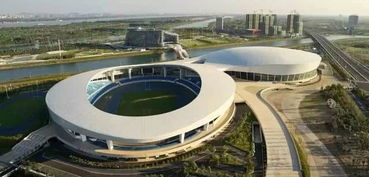国外体育馆设计
Title: The Current Landscape of Sports Centers Worldwide
Sports centers play a pivotal role in promoting health, fitness, and community engagement across the globe. From stateoftheart facilities to grassroots initiatives, the landscape of sports centers worldwide is diverse and everevolving. Let's delve into the current trends and challenges shaping the international sports center scene.
1. Diverse Facilities:

Modern Infrastructure:
Many countries boast cuttingedge sports centers equipped with the latest technology and amenities. These facilities cater to a wide range of sports, from traditional ones like basketball and soccer to niche activities like rock climbing and parkour.
MultiPurpose Venues:
To maximize utility and revenue generation, sports centers often incorporate multipurpose spaces. These venues host not only sporting events but also concerts, conventions, and cultural exhibitions, contributing to their financial sustainability.2. Technological Integration:
Smart Facilities:
Advancements in technology have revolutionized sports center management. From automated booking systems to integrated fitness trackers, technology enhances user experience and operational efficiency.
Virtual Training:
Virtual reality and augmented reality are increasingly integrated into sports center programs, offering immersive training experiences and enhancing skill development for athletes of all levels.3. Sustainability Initiatives:
Green Design:
With growing environmental awareness, many sports centers prioritize sustainability in their design and operations. Features like solar panels, rainwater harvesting systems, and ecofriendly materials help reduce carbon footprints and promote ecoconsciousness.
Community Gardens:
Some sports centers incorporate community gardens or green spaces, fostering a connection to nature and promoting wellness beyond physical exercise.4. Inclusive Programming:
Accessibility:
Efforts to make sports centers more inclusive are gaining traction worldwide. Facilities are being designed or retrofitted to accommodate individuals with disabilities, ensuring equitable access to sports and recreational activities.
Diverse Offerings:
Sports centers increasingly offer programs tailored to diverse demographics, including seniors, LGBTQ communities, and marginalized groups. This inclusivity fosters social cohesion and enriches community life.5. Global Challenges:
Financial Sustainability:
While sports centers offer immense societal benefits, many struggle with financial sustainability. Rising operational costs, coupled with fluctuating revenue streams, pose challenges for both public and private operators.
Health and Safety Concerns:
The COVID19 pandemic highlighted the importance of health and safety measures in sports centers. Enhanced sanitation protocols, crowd management strategies, and vaccination campaigns are essential for mitigating risks and restoring public confidence.
Equity and Access:
Disparities in access to sports facilities persist globally, with underserved communities facing limited resources and opportunities. Addressing these inequities requires concerted efforts from governments, NGOs, and private stakeholders.6. Future Outlook:
Digital Integration:
The integration of digital platforms and virtual experiences will continue to shape the future of sports centers. Online coaching, interactive training apps, and virtual competitions will complement traditional inperson activities, expanding access and engagement.
Health and Wellness Focus:
As societies prioritize health and wellness, sports centers will evolve into holistic wellness hubs. Beyond physical exercise, they will offer mental health support, nutritional guidance, and holistic wellness programs tailored to individual needs.
Community Engagement:
Sports centers will increasingly serve as community hubs, fostering social connections and civic engagement. Collaborations with local schools, businesses, and healthcare providers will enrich programming and strengthen ties within neighborhoods.In conclusion, the landscape of sports centers worldwide is dynamic and multifaceted, characterized by technological innovation, sustainability initiatives, and a growing emphasis on inclusivity. While facing challenges such as financial sustainability and equitable access, sports centers remain integral to promoting health, fostering community cohesion, and nurturing athletic talent on a global scale.
Note:
This HTML document provides a comprehensive overview of the current state of sports centers worldwide, highlighting key trends, challenges, and future prospects.体育资讯
MORE>- 搜索
- 最近发表
-
- 演员张丰毅,我这辈子最正确决定,就是和前妻吕丽萍各奔东西
- 中国举重队满额出征世锦赛
- 亚冠情报:中央海岸队史9战日本球队7次落败,横滨远征澳大利亚飞行10小时
- 聚合智慧 | 升华财富 产业智库服务平台
- 体育课“天天见”,要开足更要开好
- 四川:大课间活动评比释放学校体育发展活力
- 中央广播电视总台蛇年春晚吉祥物国产最新地址24小时失效“巳升升”亮相
- 2024中国体育文化博览会、中国体育旅游博览会在苏州举办
- 混合团体世界杯国乒轻取德国队
- 对标世界级赛事场馆,济南黄河体育中心以何担当?
- 体育是读懂中国的一个好窗口
- 跨省也能给家人用 快来学习“医保《c到怀孕为止》动漫钱包”如何操作
- 体育课“天天见”,要开足更要开好
- 多国专家与一线71049.соm查询王中王人道工作者共论“中国人道传统与国际人道理念”
- 什么是外场手?它与体育产业有何关联?
- 勇士队
- 培养高素质体育人才,推动乡村振兴
- 深圳,体育赛事大爆发!
- 体育教育专家吴键谈体育 家长应“放手” 社会要多支持
- 2024中国体育文化博览会、中国体育旅游博览会在苏州举办
- 标签列表
-
- 2024欧洲杯百度百科 (15)
- 2024年欧洲杯足球场 (13)
- 2024欧洲杯比赛时间 (28)
- 为什么欧洲杯看不了 (11)
- 欧洲杯一共多少球队 (15)
- 欧洲杯在哪个国家举行2024 (12)
- 欧洲杯多少支球队参加 (11)
- 欧洲杯为什么没有中国 (14)
- 欧洲杯共多少场比赛 (10)
- 欧洲杯为什么没有直播 (12)
- 欧洲杯有多少只球队参加 (11)
- 2024年欧洲杯预选赛 (14)
- 欧洲杯2024在哪个国家 (11)
- 在哪里可以看欧洲杯预选赛 (13)
- 欧洲杯每场比赛场地 (13)
- 欧洲杯预选赛最新战况 (13)
- 欧洲杯 (16)
- 2024欧洲杯全部赛程 (12)
- 欧洲杯赛程 (11)
- 直播带货公司 (11)
- 直播网站 (12)
- 直播:百度世界2023 (11)
- 直播吧 (20)
- 直播软件 (13)
- 直播代运营公司 (13)



